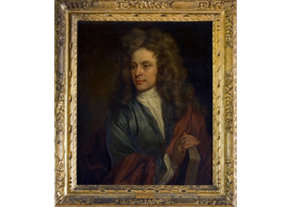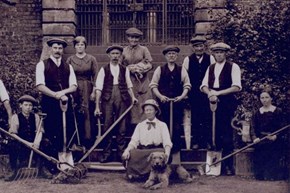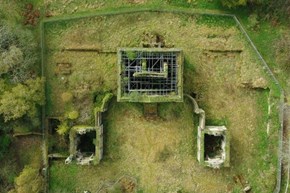The history of Mavisbank House
Landmark's historian, Caroline Stanford, uncovers the history of this Scottish renaissance villa.
Built by Scotland’s foremost architect
Mavisbank is best known as the first Palladian house in Scotland. Listed Category A, it was built in the 1720s and designed by Scotland’s foremost architect, William Adam, and his sophisticated and cosmopolitan client, Sir John Clerk of Penicuik. Clerk’s education in Leiden and travels through Europe in the 1690s gave him an experience of European buildings and culture. Following the custom of Classical writers, his creation at Mavisbank was Clerk’s realisation of a classical villa, for civilised retreat to the countryside, away from hectic life in Edinburgh or the formality of the main family seat at nearby Penicuik. He elaborated his vision in a long poem called 'The Country Seat' that was circulated widely among his peers. Mavisbank brought Palladianism to Scotland, prompting a sweeping change in architectural style and cultural outlook. A remarkably complete family archive preserves the design process in detail.
Sir John Clerk was at the forefront of the Scottish Enlightenment in a new ‘British’ age. He played a key role negotiating the Act of Union between Scotland and England in 1707, leading to the creation of the United Kingdom of Great Britain. As a Baron of the Exchequer he subsequently contributed to initiatives to expand Scottish trade and industry, and was proud that he built Mavisbank entirely from this salary rather than the income from his estates. The last 40 years of his life were spent writing a six-volume history of the relationship between England and Scotland.
Image: John Clerk of Penicuik © Private Collection

John Clerk of Penicuik © Private Collection
John Clerk of Penicuik © Private Collection
Groundbreaking mental health treatment
After bursting so brilliantly on the scene, Mavisbank fell out of family use in the late 18th century and was sold on in 1811. In 1876 it was bought by a group of pioneering Edinburgh doctors as a private asylum which broke new ground in the treatment of mental illness. It was extended and renamed New Saughton Hall. Dr John Batty Tuke, the asylum’s director, helped modernise mental health practices through more humane treatment of patients, and promoted more compassionate national legislation on ‘Lunacy’. Tuke worked to understand the causes of mental illness to improve the lot of those suffering, and advocated its treatment as a medical (rather than a criminal) condition.
Mavisbank patients were encouraged to participate in pioneering practical gardening therapies under its remarkable Head Gardener Mary E. Burton, self-educated and the first female professional gardener in Scotland. Navigating what was then an exclusively masculine profession, she later became the first female president of the Scottish Horticultural Association. During the First World War, soldiers discharged for ill-health and shell-shock were among the patients at Mavisbank, which served as a mental asylum for almost 80 years. There is much more to be discovered about those who found shelter here.

Neglected for 50 years
The asylum closed in the 1950s and was sold again to a private owner, who used it as, among other things, a car breakers yard. A disastrous fire in 1973 was followed by wilful neglect and then abandonment. The building was left roofless and largely floorless, its ownership uncertain after the death of its owner. Now stripped back to its 1720s shell, it has long been on the Buildings at Risk Register categorised as ‘High Risk’ and in ‘Ruinous’ condition. It was saved from outright demolition in 1987 only thanks to a public outcry and a group of volunteers. Historic Environment Scotland, who manage the policies and parkland, have kept the building scaffolded in recent years to prevent total collapse but can do no more than this.
The building has been without an identified owner for over 40 years. Without resolution of this obstacle of ownership, the building cannot be saved. In March 2023 Midlothian Council agreed to use its compulsory purchase powers to help secure the building's future.
For almost 30 years, passionate attempts have been made to solve Mavisbank’s complex problems but have come to nothing. Landmark is not used to giving up. We have learned from past campaigns and are now firm in our resolution that our current plan will finally save the building once and for all. If our application to NHMF is successful, we will be off the starting block.


